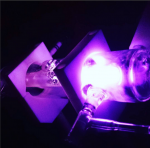- Joined
- Mar 25, 2016
- Messages
- 475
- Points
- 0
Yes this is very exciting stuff for certain  The experience is good on top of the lab experience I am getting as a qc analytical chemist right now. Good idea about finding a computational chemist to simulate the diode as well much appreciated m8.
The experience is good on top of the lab experience I am getting as a qc analytical chemist right now. Good idea about finding a computational chemist to simulate the diode as well much appreciated m8.






